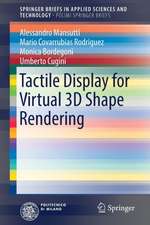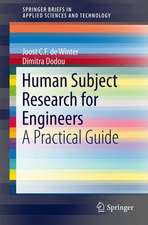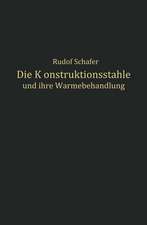Materials and Joints in Timber Structures: Recent Developments of Technology: RILEM Bookseries, cartea 9
Editat de Simon Aicher, H.-W. Reinhardt, Harald Garrechten Limba Engleză Hardback – 9 oct 2013
The book is structured in nine thematic areas, being
I) Structures
II) Mechanical Connections
III) Glued Joints and Adhesives
IV) Timber and Concrete/Cement/Polymer Composites
V) Cyclic, Seismic Behavior
VI) Hardwood, Modified Wood and Bamboo
VII) Cross-Laminated Timber
VIII) Properties and Testing of Wood
IX) Glulam
| Toate formatele și edițiile | Preț | Express |
|---|---|---|
| Paperback (1) | 2114.45 lei 6-8 săpt. | |
| SPRINGER NETHERLANDS – 2 oct 2016 | 2114.45 lei 6-8 săpt. | |
| Hardback (1) | 2119.31 lei 6-8 săpt. | |
| SPRINGER NETHERLANDS – 9 oct 2013 | 2119.31 lei 6-8 săpt. |
Din seria RILEM Bookseries
- 18%
 Preț: 952.09 lei
Preț: 952.09 lei - 24%
 Preț: 1946.92 lei
Preț: 1946.92 lei - 18%
 Preț: 1872.30 lei
Preț: 1872.30 lei - 18%
 Preț: 1401.16 lei
Preț: 1401.16 lei - 18%
 Preț: 2154.04 lei
Preț: 2154.04 lei - 18%
 Preț: 1824.32 lei
Preț: 1824.32 lei - 18%
 Preț: 1401.61 lei
Preț: 1401.61 lei - 24%
 Preț: 1125.13 lei
Preț: 1125.13 lei - 20%
 Preț: 573.07 lei
Preț: 573.07 lei - 18%
 Preț: 1246.95 lei
Preț: 1246.95 lei - 24%
 Preț: 797.66 lei
Preț: 797.66 lei - 18%
 Preț: 1247.88 lei
Preț: 1247.88 lei - 18%
 Preț: 1561.68 lei
Preț: 1561.68 lei - 24%
 Preț: 788.48 lei
Preț: 788.48 lei - 24%
 Preț: 3265.87 lei
Preț: 3265.87 lei - 18%
 Preț: 1234.62 lei
Preț: 1234.62 lei - 18%
 Preț: 952.89 lei
Preț: 952.89 lei - 18%
 Preț: 939.46 lei
Preț: 939.46 lei - 18%
 Preț: 953.20 lei
Preț: 953.20 lei - 18%
 Preț: 1235.57 lei
Preț: 1235.57 lei - 18%
 Preț: 943.88 lei
Preț: 943.88 lei - 18%
 Preț: 1244.89 lei
Preț: 1244.89 lei - 18%
 Preț: 939.94 lei
Preț: 939.94 lei - 18%
 Preț: 1231.78 lei
Preț: 1231.78 lei - 18%
 Preț: 938.66 lei
Preț: 938.66 lei - 18%
 Preț: 2511.88 lei
Preț: 2511.88 lei - 18%
 Preț: 1222.94 lei
Preț: 1222.94 lei - 18%
 Preț: 947.85 lei
Preț: 947.85 lei - 18%
 Preț: 956.72 lei
Preț: 956.72 lei
Preț: 2119.31 lei
Preț vechi: 2584.52 lei
-18% Nou
Puncte Express: 3179
Preț estimativ în valută:
405.52€ • 424.54$ • 335.55£
405.52€ • 424.54$ • 335.55£
Carte tipărită la comandă
Livrare economică 05-19 aprilie
Preluare comenzi: 021 569.72.76
Specificații
ISBN-13: 9789400778108
ISBN-10: 9400778104
Pagini: 600
Ilustrații: XVI, 839 p. 542 illus., 304 illus. in color.
Dimensiuni: 155 x 235 x 53 mm
Greutate: 1.32 kg
Ediția:2014
Editura: SPRINGER NETHERLANDS
Colecția Springer
Seria RILEM Bookseries
Locul publicării:Dordrecht, Netherlands
ISBN-10: 9400778104
Pagini: 600
Ilustrații: XVI, 839 p. 542 illus., 304 illus. in color.
Dimensiuni: 155 x 235 x 53 mm
Greutate: 1.32 kg
Ediția:2014
Editura: SPRINGER NETHERLANDS
Colecția Springer
Seria RILEM Bookseries
Locul publicării:Dordrecht, Netherlands
Public țintă
ResearchCuprins
Preface.- Part 1 Structures.- Structures 1: Horizontal displacements in medium-rise timber buildings – Basic FE modeling in serviceability limit state, by I. Näslund , H. Johnsson.- Moment resistance of a concealed timber post base joint, by J. Humbert, S. J. Lee, J. S. Park, M. J. Park.- The multifunctional TES-façade joint, by S. Loebus, S. Ott, S. Winter.- Green-glued products for structural applications, by E. Serrano, J. Oscarsson, M. Sterley, B. Enquist.- Structures 2:Experimental analysis of a post-tensioned timber connection, by F. Wanninger, A. Frangi.- Risk based investigations of partly failed or damaged timber constructions, by G. Fink, J. Kohler.- Naturally grown round wood – ideas for an engineering design, by M. Frese, H. J. Blaß.- Recycling and end of life scenarios for timber structures, by A. Hafner, S. Ott, S. Winter.- Structures 3:Advancements for the structural application of fiber – reinforced moulded wooden tubes, by J. Wehsener, T. Werner, J. Hartig, P. Haller.- Sole plate fixing details for modern methods of timber construction, by J. Menendez, K. Leitch, R. Hairstans.- Thin-walled timber structures, by B. P. Gilbert, S. B. Hancock, H. Bailleres.- Structures 4: Statically indeterminate structures in a brittle material, by A. Lawrence.- Novel lightweight timber composite element - web design in shear and compression, by C. Stritzke, S. Aicher.- Latest developments in timber bridge constructions, by F. Miebach, D. Niewerth.- Part 2 Mechanical Connections.- Mechanical Connections 1:Steel-to-timber joints with very high strength steel dowels using spruce, beech and azobé, by J.W. van de Kuilen, C. Sandhaas, H. Blaß.- Wood load-carrying capacity of small dowel-type timber connections – an extended application for nails and screws, by P. Zarnani, P. Queenneville.- Ductility in timber structures considering the plastic behaviour of dowel type fasteners, by F. Brühl, J. Schänzlin, U. Kuhlmann.- An experimental study onbearing strength in compression for bolted joint of plywood, by A. Ohtsuka, S. Takahashi, T. Ito, W. Kambe.- Mechanical Connections 2:Investigations concerning the force distribution along axially loaded self-tapping screws, by A. Ringhofer, G. Schickhofer.- Experimental analysis on the structural behaviour of connections with LVL made of beech wood, by P. Kobel, R. Steiger, A. Frangi.- The embedment failure of European beech compared to spruce wood and standards, by S. Franke, N. Magnière Mechanical Connections 3: Modelling of non-metallic timber connections at elevated temperatures, by D. Brandon, M. P. Ansell, R. Harris, P. Walker, J. Bregulla.- Analysis of the brittle failure and design of connections loaded perpendicular to grain, by B. Franke, P. Quenneville.- Structural performance and advantage of DVW reinforced moment transmitting timber joints with steel plate connectors and tube fasteners, by D. Brandon, A. Leijten.- Fully threaded self-tapping screws subjected to combined axial and lateral loading with different load to grain angles, by R. Jockwer, R. Steiger, A. Frangi.- Mechanical Connections 4:Alternative approach to avoid brittle failure in dowelled connections, by D. Wrzesniak, M. Fragiacomo, A. Jorissen.- Resistance and failure mode of axially loaded groups of screws, by U. Mahlknecht, R. Brandner, A. Ringhofer, G. Schickhofer.- A method to determine the plastic bending angle of dowel-type fasteners, by M. Steilner, H. J. Blaß.- Low damage design using a gravity rocking moment connection, by M. Jamil, P. Quenneville, C. Clifton.- Part 3 Glued Joints and Adhesives.- Glued Joints and Adhesives 1:Finger jointing of freshly sawn Norway spruce side boards – a comparative study of fracture properties of joints glued with phenol-resorcinol and one-component polyurethane adhesive, by M. Sterley, E. Serrano, B. Enquist, J. Hornatowska.- Pressure distribution in block glue lines analyzed by theory of beams on elastic foundation, by G. Stapf, S. Aicher.-EPI for glued laminated timber, by K. Groestad, R. Bredesen.- Bonding of various wood species – studies about their applicability in glued-laminated timber, by Y. Jiang, J. Schaffrath, M. Knorz, S. Winter.- Glued Joints and Adhesives 2:Fatigue performance of adhesive connections for wooden wind towers, by L. Bathon, O. Bletz-Mühldorfer, J. Schmidt, F. Diehl.- Multifunctional wood-adhesives for structural health monitoring purposes, by C. Winkler, U. Schwarz.- Assessment of the glue-line quality in glued laminated timber structures, by B. Franke, F. Scharmacher, A. Müller.- Review of recent applied research activities on one-component PUR-adhesives for engineered wood products, by C. Lehringer, J. Gabriel.- Part 4Timber and Concrete/Cement/PolymerComposites.- Timber and Concrete/Cement/Polymer Composites 1:Development of a high-performance hybrid system made of composites and timber (High-Tech Timber Beam), by M. Jahreis, M. Kästner, W. Hädicke, K. Rautenstrauch.- Experimental study of the composite timber-concrete SBB connection under monotonic and reversed-cyclic loadings, by M. Manthey, Q. H. Nguyen, H. Somja, J. Duchêne, M. Hjiaj.- The predictive model for stiffness of inclined screws as shear connection in timber-concrete composite floor, by F. Moshiri, R. Shrestha, K. Crews.- Shear performance of wood-concrete composite with different anchorage length of steel rebar, by S. J. Lee, J. Humbert, K. M. Kim, J. S. Park, M. J. Park.- Timber and Concrete/Cement/Polymer Composites 2:Development of prefabricated timber-concrete composite floors, by P. Kuklik, P. Nechanicky, A. Kuklikova.- Wood based construction for multi-storey buildings – application of cement bonded wood composites as structural element, by A. Fadai, M. Fuchs, W. Winter.- 45 Rehabilitation, upgrading and repair of historic timber structures with polymer concrete and FRP-reinforcement, by M. Jahreis, K. Rautenstrauch.- Timber and Concrete/Cement/Polymer Composites 3: Fatigue Performance ofsingle span wood-concrete-composite bridges, by L. Bathon, O. Bletz-Mühldorfer, by Hybrid wall-slabs for multi-storey buildings – made of timber with a directly applied mineral cover layer, by C. Dorn, A. Stief, M. Jahreis, K. Rautenstrauch.- Prefabricated timber-concrete composite system: experimental and numerical investigations, by R. Crocetti, T. Sartori, R. Tomasi, J. L. F. Cabo.- Part 5 Cyclic, Seismic Behaviour.- A component model for cyclic behaviour of wooden structures, by G. Rinaldin, M. Fragiacomo.- Overview of a project to quantify seismic performance factors for cross laminated timber structures in the United States, by M. O. Amini, J. W. van de Lindt, S. Pei, D. Rammer, P. Line, M. Popovski.- Force modification factors for CLT structures for NBCC, by M. Popovski, S. Pei, J. W. van de Lindt, E. Karacabeyli.- Experimental testing of a portal frame connection using glued-in steel rods, by J. Walker, R. Xiao.- Part 6 Hardwood, Modified Wood and Bamboo.- Hardwood, Modified Wood and Bamboo 1: Bending strength and stiffness of glulam beams made of thermally modified beech timber, by R. Widmann, W. Beikircher, J. L. F. Cabo, R. Steiger.- Structural veneer based composite products from hardwood thinning – Part I: Background and manufacturing, by I. D. Underhill, B. P. Gilbert, H. Bailleres, R. McGavin, D. Patterson.- Glue laminated bamboo (GluBam) for structural applications, by Y. Xiao, B. Shan, R.Z. Yang, Z. Li, J. Chen.- Glued laminated veneer lumber made of beech wood - superior performance in compression loading, by G. Dill-Langer, S. Aicher.- Hardwood, Modified Wood and Bamboo 2: Structural performance of Accoya® wood under service class 3 conditions, by J. Marcroft, F. Perez Perez, F. Bongers, I. Harrison, J. Alexander.- Structural veneer based composite products from hardwood thinning – Part II: Testing of hollow utility poles, by B. P. Gilbert, I. D. Underhill, H. Bailleres, R. McGavin.- Glulam from European white oak - finger jointinfluence on bending size effect, by S. Aicher, G. Stapf.- Non-homogeneous thermal properties of bamboo, by P. Huang, W.S. Chang, A. Shea, M. Lawrence, M. Ansell.- Part7 Cross-Laminated Timber.- Cross-Laminated Timber 1: Tapered beams made of cross laminated timber, by M. Flaig, H. J. Blaß.- Influence of the connection modelling on the seismic behaviour of crosslam timber buildings, by I. Sustersic, B. Dujic, M. Fragiacomo.- Behaviour of cross-laminated timber panels under cyclic loads, by I. Gavric, M. Fragiacomo, M. Popovski, A. Ceccotti.- Cross-Laminated Timber 2: Experimental identification of failure mechanisms and the evolution of corresponding cracking modes in CLT, by G. Hochreiner, J. Füssl, J. Eberhardsteiner, S. Aicher.- Seismic strengthening of existing concrete and masonry buildings with crosslam timber panels, by I. Sustersic, B. Dujic.- In-plane stiffness of traditional timber floors strengthened with CLT, by J. M. Branco, M. Kekeliak, P.B. Lourenço.- Proposed alternative design criteria for dowel type joint with CLT, by S. Nakashima, A. Kitamori, T. Mori, K. Komatsu.- Part 8 Properties and Testing of Wood.- Length effects on tensile strength in timber members with and without finger joints, by R. Brandner, G. Schickhofer.- New perspectives in machine strength grading – or how to identify a top rupture, by J. K. Denzler, A. Weidenhiller.- Aspects of the difference between the local and global modulus of elasticity of structural (hardwood) timber, by G. J. P. Ravenshorst, P. A. de Vries, J. W. G. van de Kuilen.- Part 9 Glulam.- A study of Australian glulam, by H.R. Milner, C.Y. Adam.- Improving strength of glulam laminations of Norway spruce side boards by removal of weak section using optimized finger jointing, by J. Oscarsson, A. Olsson, B. Enquist.- Double span continuous glulam slabs strengthened with GFRP, by J. M. Branco, M. P. Jorge, J. Sena-Cruz.- Simplified design of glued laminated timber girders for the torsional moment caused bystability effects, by R. Hofmann, U. Kuhlmann.- Author Index.- Subject Index.
Textul de pe ultima copertă
This book contains the contributions from the RILEM International Symposium on Materials and Joints in Timber Structures that was held in Stuttgart, Germany from October 8 to 10, 2013. It covers recent developments in the materials and the joints used in modern timber structures. Regarding basic wooden materials, the contributions highlight the widened spectrum of products comprising cross-laminated timber, glulam and LVL from hardwoods and block glued elements. Timber concrete compounds, cement bonded wood composites and innovative light-weight constructions represent increasingly employed alternatives for floors, bridges and facades. With regard to jointing technologies, considerable advances in both mechanical connections and glued joints are presented. Self-tapping screws have created unprecedented options for reliable, strong as well as ductile joints and reinforcement technologies. Regarding adhesives, which constitute the basis of the jointing/laminating technology of modern timber products, extended options for tailor-made bonding solutions have to be stated. Apart from melamine-urea and phenolic-resorcinol adhesives, one-component-polyurethanes, emulsion isocyanate polymers and epoxies offer a wide range of possibilities. The contributions dealing with experimental and numerical investigations on static, cyclic and seismic behavior of structures clearly reveal the enhanced potential of modern timber construction for reliable and sustainable buildings and bridges of the new millennium.
The book is structured in nine thematic areas, being
I) Structures
II) Mechanical Connections
III) Glued Joints and Adhesives
IV) Timber and Concrete/Cement/Polymer Composites
V) Cyclic, Seismic Behavior
VI) Hardwood, Modified Wood and Bamboo
VII) Cross-Laminated Timber
VIII) Properties and Testing of Wood
IX) Glulam
The book is structured in nine thematic areas, being
I) Structures
II) Mechanical Connections
III) Glued Joints and Adhesives
IV) Timber and Concrete/Cement/Polymer Composites
V) Cyclic, Seismic Behavior
VI) Hardwood, Modified Wood and Bamboo
VII) Cross-Laminated Timber
VIII) Properties and Testing of Wood
IX) Glulam
Caracteristici
Unique compilation of most advanced materials and jointing techniques in timber structures Deals, f.e., with techniques involving ductile joints with mechanical fasteners and very stiff glued joints Showcases timber structures as a viable ecological alternative to other structures





















